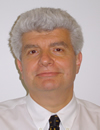How strong are our foundations? Physicians who take care of patients with thyroid disease could be forgiven when they think, as I have sometimes heard, that there are few unresolved clinically relevant questions in thyroidology, because almost all patients do well. Is this really so? Take for instance the upward trend in thyroid cancer incidence, which most agree is due in part to incidental diagnosis of subclinical disease. However, other studies suggest that at least some of this increase cannot be so easily explained away. So, are we handling this problem properly? Who should be imaged? When should we biopsy, and who and how should we treat? Many other questions that appeared to be settled are now being revisited. For instance, as we learn more about the molecular basis of thyroid hormone transport, metabolism and action we likely need to reconsider if our one-size-fits-all approach to thyroid hormone therapy is appropriate to the task. And if it is not, how do we individualize the correct replacement approach for a particular patient? In fact, I can think of few areas in the thyroid field where we are on truly solid ground when we help our patients make clinical decisions. If you think this is an overstatement, take a few minutes to flip over the ATA guidelines for the various clinical entities, and see for yourself how many of the recommendations are based on level A or B evidence. I bring these issues up as I have been reflecting on one of the seemingly intractable challenges the ATA faces as an organization. We have seen a gradual attrition in the cadre of basic and translational investigators who focus on thyroid-related topics, and many of those that do no longer come to our meetings or have an active role in our society. I believe that we would be deeply impoverished if the ATA Annual Meeting were to become an exclusively clinical affair, and that the pace of discovery and our ability to benefit patients would diminish. Scientists who act as if they have nothing to gain from listening to their clinical colleagues are in my view just as short sighted as the physicians who show no interest in understanding the biology of the conditions they treat. So, is there anything we can do to reverse this trend? There is of course, no simple answer. This year in Quebec City the ATA Meeting will meet shortly after the 10th International Workshop on Thyroid Hormone Resistance and Thyroid Hormone Action, also held in Quebec. Our Program Committee hopes to attract many of the workshop participants to present their data at our meeting as well. Maybe we can all get reacquainted! If successful, perhaps this is a model that can be replicated in the future. Regardless, I think that exploring new ways to reinvigorate the participation of translational and basic investigators in the ATA should be front and center in our minds if we are remain a vibrant and relevant medical organization. With best wishes, James A. Fagin, MD |

